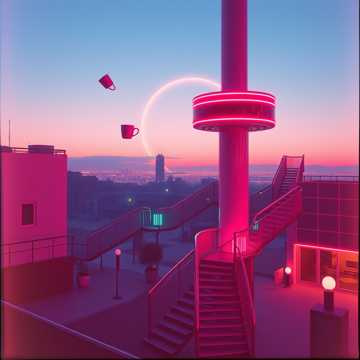
Free Disorientation Music Generator Powered by AI
Turn text into high-quality Disorientation music effortlessly – no login required!
music.toolTips

Para sa mga bobo sa Syudad
A playful yet reflective song that critiques the aimlessness of urban life, combining quirky lyrics with an upbeat pop sound, generated by Suno AI.
03:14
Invalid date
Introduction to the Disorientation Music Tag
Disorientation is a unique music tag that captures the essence of sonic instability, confusion, and spatial distortion within auditory experiences. The term 'Disorientation' in music refers to compositions or soundscapes that intentionally disrupt traditional musical structures to evoke feelings of unease, dislocation, or altered perception. Historically, the Disorientation style traces back to early experimental and avant-garde movements of the 20th century, such as musique concrète and the rise of electronic manipulation in sound design. Artists and composers like John Cage, Karlheinz Stockhausen, and later Brian Eno laid the groundwork for the concept of sonic dislocation, using unconventional rhythms, atonal harmonies, and unpredictable spatial arrangements. With the advent of digital production and immersive technologies, Disorientation music evolved further, becoming central to genres like ambient experimental, glitch, and sound art installations. In modern contexts, Disorientation serves as both an aesthetic and emotional device, challenging the listener’s sense of balance and perception.
Famous Artists and Works Related to Disorientation Music
Aphex Twin
Aphex Twin is renowned for pioneering the use of unpredictable rhythmic structures and manipulated sound textures that define Disorientation. His works such as 'Ventolin' and 'Come to Daddy' utilize abrasive frequencies and erratic tempo changes to create unease and fascination simultaneously.
Aphex Twin – 'Selected Ambient Works Volume II'
This album is a cornerstone of Ambient Disorientation. Through abstract melodies, subtle noise layers, and minimal rhythm, it constructs a dreamlike yet unsettling auditory world. Its spatial ambiguity and absence of clear structure make it an archetype of the Disorientation sound.
Autechre
Autechre’s contributions to Disorientation music are immense, characterized by abstract, algorithmic structures that challenge conventional rhythm and tonality. Albums like 'Confield' and 'Exai' explore sonic disarray, employing computer-generated soundscapes that feel both mechanical and organic.
Autechre – 'Confield'
‘Confield’ embodies Glitch and Rhythmic Disorientation, featuring algorithmic compositions that constantly mutate. The album’s chaotic patterns and shifting sonic density push listeners to the edge of auditory comprehension, redefining electronic abstraction.
Tim Hecker
Tim Hecker is a key figure in Ambient Disorientation, blending dense layers of distortion and harmonic decay. His albums 'Virgins' and 'Ravedeath, 1972' craft immersive environments where noise and beauty coexist, creating a profound sense of sensory confusion.
Tim Hecker – 'Virgins'
In 'Virgins', acoustic recordings are processed through layers of distortion and reverb to evoke both beauty and decay. The resulting soundscape blurs spatial perception, immersing the listener in a sense of drifting disconnection.
Ben Frost
Ben Frost integrates noise, drone, and minimalism to evoke physical and psychological unease. His works such as 'By the Throat' and 'A U R O R A' use distorted textures and percussive intensity to capture the raw energy of Disorientation.
Ben Frost – 'A U R O R A'
‘A U R O R A’ merges industrial percussion and luminous synths, creating a physically intense sense of Disorientation. The album’s relentless energy and harsh textures reflect the visceral side of sonic instability.
Oneohtrix Point Never
Known for blending nostalgia and disruption, Oneohtrix Point Never creates fractured soundscapes through sample manipulation and digital distortion. His album 'Garden of Delete' stands as a defining work in modern Disorientation, blurring the boundaries between melody, chaos, and synthetic emotion.
Application Scenarios of Disorientation Music
Disorientation music is frequently used in psychological thrillers, sci-fi, and horror films to emphasize tension and mental instability. Its spatial manipulation and atonal structures effectively depict characters experiencing confusion or disconnection from reality.
Film and Television Soundtracks
In interactive media, Disorientation music enhances immersion by dislocating auditory cues. It’s often used in puzzle, horror, or surreal exploration games to disorient players and heighten emotional engagement.
Video Game Background Music
Sound artists use Disorientation compositions in galleries to challenge perception and encourage introspection. Spatially distributed speakers and reactive sound systems immerse visitors in evolving soundscapes that evoke altered consciousness.
Art Installations and Museums
Forward-thinking brands use subtle Disorientation elements to capture attention and create memorable, unconventional atmospheres. It’s especially effective in tech or fashion campaigns that emphasize innovation and emotional impact.
Advertising and Branding
Disorientation music is essential in VR experiences that simulate surreal or dreamlike environments. Through 3D audio and dynamic spatial effects, it manipulates sensory perception to intensify presence and psychological depth.
Virtual Reality and Immersive Experiences